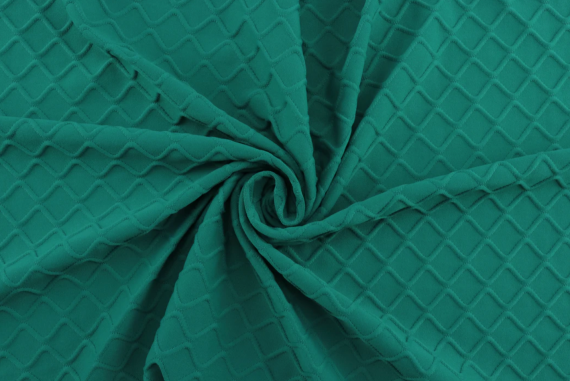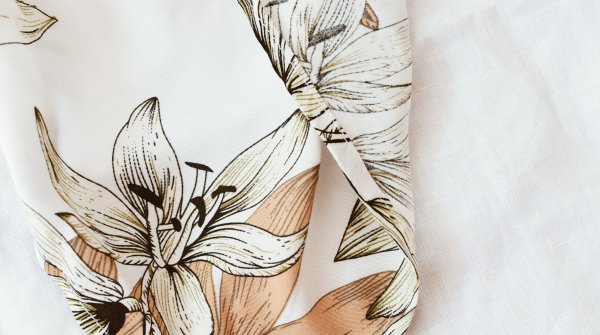Before we dive into it. Here are the seven things you need to know about elastane fabric.
- Elastane is a synthetic fiber known for its exceptional stretchiness.
- Elastane is often used in combination with other fibers to create stretchy clothing.
- Elastane is resistant to body oils, perspiration, and sunlight, making it durable.
- Elastane can lose its stretchiness over time and with exposure to high temperatures.
- Elastane is also known as spandex or Lycra, which are similar but not identical fibers.
- Elastane is used in a variety of clothing, including athletic wear, swimwear, and denim.
- Elastane is not biodegradable, and its environmental impact is a growing concern in the fashion industry.
Elastane, also known as spandex or Lycra, is a synthetic fiber known for its exceptional stretchiness. It is often used in combination with other fibers to create stretchy clothing and is used in a variety of garments, including athletic wear, swimwear, and denim. Elastane, spandex, and Lycra are terms that are often used interchangeably to refer to the same type of synthetic fiber. In general, there is no significant difference between elastane and spandex, as they are both made from the same polymer and have similar properties. Lycra is a trademarked brand name of elastane/spandex fibers produced by the company Invista.
A lot of questions arise when we talk about this fiber: where does spandex come from? Is spandex breathable? And is spandex natural or synthetic? As the name suggests, it is enormously stretchable. The main component of the synthetic fiber is polyurethane, a synthetic raw material that is as stretchy as rubber. This allows elastane to be stretched by up to 700 percent without wearing out: the fiber always returns to its original shape undamaged. A remarkable stretching exercise, which makes spandex the perfect material for precisely fitting sportswear that puts away all movements unscathed.
The smooth, rubber-like texture ensures that spandex fabrics are extremely durable and do not wrinkle. They also do not lint and no unsightly nodules form - a wear process called "pilling".

After the rubber comparison, this property of the material elastane is even more amazing. The smooth spandex fibers absorb little moisture and dry quickly again. Thus, clothing made of spandex never looks uncomfortably wet. However, there is one disadvantage: the synthetic fiber develops unpleasant odors more quickly than it's the case with natural fibers. However, there are already innovative coatings that prevent perspiration odors.
Artificial fibers do not feel as comfortable on the skin as natural fibers. That's why elastane is only ever added to fabrics to make snug-fitting and elastic fabrics, and not used exclusively for fabric production. The proportion is usually less than 30 percent and endows cotton fabrics, for example, with stretchy capabilities. Stretch jeans, socks or yoga pants are a good example. However, spandex not only works well in the mix with sustainable natural fibers, but is also readily found in super stretchy blended fabrics with other synthetic fibers, for example for neoprene suits, swimwear or cycling clothing.

What is elastane made of? The answer is shocking to many. This sporty fiber is created in the chemical laboratory on a synthetic basis. According to the EU Textile Labeling Regulation, it must consist of at least 85 percent polyurethane, a material derived from the non-renewable raw materials crude oil and natural gas. The production requires a huge amount of energy and the resulting intermediate products are problematic for the environment.
While environmentally friendly recycling processes already exist for regenerative natural fibers such as cotton, merino wool or linen, it has not yet been possible to develop a mature process for recycling synthetic materials such as spandex. Also problematic is that through the wear of the textiles, tiny particles from the synthetic fibers enter nature as microplastics.
A large part of the wear and tear happens in the washing machine: microparticles are released from the spandex fabric during the wash cycle and enter the wastewater. They are so small that they are not filtered out even in the sewage treatment plant. As a result, they end up directly in rivers, lakes and oceans, and ultimately in fish, mussels and aquatic plants. To curb this pollution, you should definitely wash your spandex-containing sportswear in special laundry bags that collect the microplastics.
You’ve read some interesting facts about elastane. The fabric brings some advantages, including good breathability and high durability. However, if you want to rely on sustainable fabrics, spandex is only a good choice to a certain extent.
What is elastane?
Elastane is a chemical fiber that is characterized by its high elasticity and its high stretchability. The rubber-like man-made fiber is also called "spandex".
Is elastane stretchy?
Elastane belongs to the group of synthetic fibers and is therefore stretchy. The fibers of elastane are often added to natural fabrics to make it more stretchy.
Is spandex sustainable?
While spandex as a synthetic fiber provides a vegan alternative for sportswear, the fabric is not entirely harmless to the environment. According to EU regulations, spandex must consist of at least 85 percent polyurethane, which is obtained from non-regenerative raw materials such as crude oil and natural gas.
What is the basis of elastane fabric, and why is it considered environmentally problematic?
Elastane fabric is primarily made from polyurethane, which is derived from non-renewable raw materials such as crude oil and natural gas. The production of elastane requires a significant amount of energy, and the resulting intermediate products have environmental implications. Additionally, the wear and tear of elastane-containing textiles release tiny particles of synthetic fibers into the environment, contributing to microplastic pollution.
How can the environmental impact of washing spandex-containing sportswear be reduced?
To reduce the environmental impact of washing spandex-containing sportswear, it is recommended to wash such clothing in special laundry bags that can collect the microplastics released during the washing cycle. This helps prevent these tiny particles from entering rivers, lakes, oceans, and the aquatic ecosystem.
 SustainabilityReady for the Green Deal? An Update for the Sports Industry
SustainabilityReady for the Green Deal? An Update for the Sports Industry
- Awards
- Mountain sports
- Bike
- Fitness
- Health
- ISPO Munich
- Running
- Brands
- Sustainability
- Olympia
- OutDoor
- Promotion
- Sports Business
- Textrends
- Triathlon
- Water sports
- Winter sports
- eSports
- SportsTech
- OutDoor by ISPO
- Heroes
- Transformation
- Sport Fashion
- Urban Culture
- Challenges of a CEO
- Trade fairs
- Sports
- Find the Balance
- Product reviews
- Newsletter Exclusive Area
- Magazine




